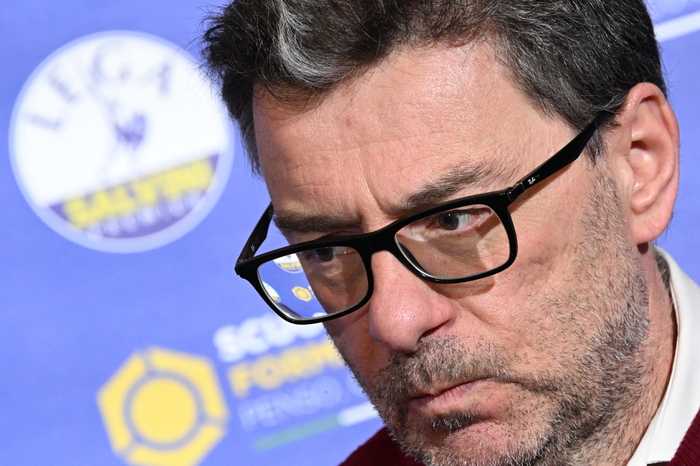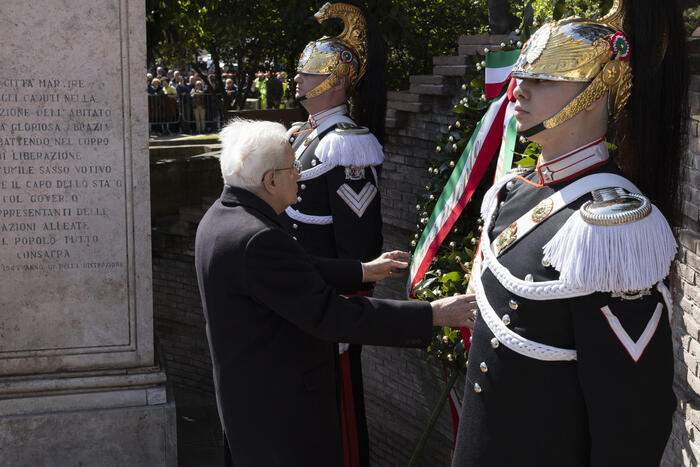A threatening strip of instability, stretching from the Black Sea to the outskirts of the Baltic, has emerged as a new wall between Russia and its European neighbors.
In this area, where arbitrariness reigns, around 14 million people are defenseless against the whims of their leaders, all of them supported by Moscow.
This space is not compact, but is made up of administrative units that have followed different paths after the end of the Soviet Union.
Crimea, the Donbas region and Belarus today constitute the three links in a chain of insecurity that has been formed since 2014 on the western flanks of the empire that disappeared 30 years ago.
To these three links, there are added the territories with entrenched problems that manifested themselves before the USSR fragmented in the nineties: Transnistria, in Moldova;
Abkhazia and South Ossetia, in Georgia;
and Upper Karabakh in Azerbaijan.
One of those links is in Ukraine.
This country and Russia mutually recognized their territorial integrity (including Crimea as part of Ukraine) and this recognition, established in 1990 and 1991, was embodied in the great friendship treaty of 1997, ratified by the two countries, and in numerous international documents.
However, in 2014 Moscow annexed Crimea through a pseudo referendum (illegal in both Ukraine and Russia), after military occupation of key strategic points on the peninsula, where its Black Sea fleet was (and is) stationed.
The powerful military grouping created in Crimea since 2014 allows Russia to carry out operations throughout that sea.
Moscow has strengthened its aviation, its surface and submarine fleet, its anti-aircraft defenses and its missile groups and, in addition, it is not excluded that it may have atomic weapons in that territory.
Today, Crimea is linked to Russia by a bridge over the Kerch Strait and the number of uniformed men there exceeds 42,000.
Moscow outlawed the self-government institutions of the local Tatar community and has persecuted and imprisoned their leaders.
However, on the peninsula, Russian laws have limited value, as the Kremlin relies on a local elite who have taken advantage of the annexation for their own ends.
Proof of citizen defenselessness are real estate expropriations that affect the inhabitants of Crimea regardless of their nationality.
A new provision establishes that only those who have a Russian passport may own land in the coastal area of the peninsula.
The Black Sea, therefore, has become a zone of confrontation where Russia defends its new spaces in fact and the Western powers affirm their disagreement with the repeated military presence.
The result is dangerous shipping lanes and risky approaches by rival planes in the air.
From Moscow's point of view, the Kerch Strait, between the Sea of Azov and the Black Sea, has ceased to be a shared space with Ukraine and has become a Russian transit zone.
Among the consequences is the decline and crisis of Ukraine's economic activity in the Sea of Azov.
From the Crimea, secessionist conflicts spread to eastern Ukraine in the spring of 2014. In a hybrid war, pro-Russian separatists were supported by Russian military contingents, not officially recognized by Moscow.
With the help of Russian military equipment, the separatists consolidated control of a third of the area of the Donetsk and Lugansk provinces in an offensive that lasted until February 2015.
In the official documents of the Minsk talks (the only diplomatic channel to resolve the conflict, under the aegis of the OSCE), the secessionist territory is called ORDLO (short for “certain areas of Donetsk and Lugansk” in Russian) and in it two units have been created (the so-called “people's republics” of Donetsk and Lugansk), which are oriented towards Moscow, depend on Kremlin guardians, use the ruble as currency and communicate with the world mainly through the Russian border, given the blockade that Ukraine imposed on this territory in 2017.
Despite the fact that this blockade was somewhat lightened after the arrival of Volodymyr Zelenski to the presidency of Ukraine, the measures against the coronavirus have reinforced the isolation of ORDLO, whose inhabitants Moscow grants Russian passports through a simplified procedure.
The number of passports distributed in the "people's republics" as a whole was already around 250,000 last June.
According to calculations by the Ministry of Defense in Kiev, the Russian military contingent in ORDLO is made up of some 2,000 people, partly acting temporarily and in shifts.
Particularly disturbing is the situation of prisoners in the prisons of the republics, among whom have been detected victims of conflicts of interest between the various groups of influence and also of the exacerbated suspicion of those responsible for local security.
Stop the fire
The conflict in ORDLO, in which nearly 14,000 people have perished, acts as an instrument of pressure on Kiev.
A ceasefire is currently being held at the front, although the Minsk talks are stalled today.
On the Russian side, the person responsible is Dmitri Kózak, a close friend of Vladimir Putin, who in 2003 negotiated a formula to end the Transnistrian conflict in Moldova.
Had its plan been approved then, Moldova would have become a demilitarized confederation with the Transdniestrian zone, where a contingent of 2,000 Russian soldiers would remain stationed until 2020 as guarantors of the agreement.
The chain of instability continues in Belarus.
It is a sovereign state, but it is closely linked to Moscow by a complicated single state project.
The instability that this country represents today comes from the disagreement between Alexandr Lukashenko, the leader who clings to power, and a society that rejects him.
Moscow has closed its eyes to the electoral fraud of August 9 and recognized as legitimate Lukashenko, who relies on privileged, pampered and trained security forces to serve him personally.
The leader, who has been in power since 1994, took office on September 23 in a secretly organized ceremony;
and the protest demonstrations that followed have been brutally suppressed.
Belarus' European neighbors do not recognize Lukashenko and are willing to provide asylum and help Belarusians in distress.
Without wanting to give in one iota, after the elections, Lukashenko asked Russia for help, invoking the obligations of this country in the framework of bilateral agreements and also the treaty of the Collective Security Organization (Russia and its post-Soviet allies).
Putin mobilized a contingent of police and security forces to intervene in Belarus and later announced that the contingent had returned to their home bases, as their employment was not necessary.
Lukashenko depends today more than ever on Russia, a country for which Belarus is of strategic importance because it is its only ally in Europe and because it is a gateway for trade with the EU.
Moscow has two military installations in Belarus (one for radar against possible missile attacks near Baranovich and a communications center with the fleet in Vileika) and is interested in establishing a base there for its long-haul aircraft.
The protests in Belarus have so far not had an anti-Russian dimension (as the Ukrainians did against President Victor Yanukovych in 2013 and 2014), but the situation could change if Russia continues to support Lukashenko.
Like it or not, Belarus' neighbors are involved in the conflicts in this country, which are not between the president and the opposition, but between the president and society.
Russia bets on the president;
the rest of the surrounding States, by society.
The protests, which have generally been peaceful, have not abated and, in view of the repression to which they are subjected, the conflict could take on a more violent character.
In the three territories of the new strip of insecurity in Europe, Moscow has the decisive cards.
At the moment, it has not used them to resolve conflicts, but to aggravate, entrench and strengthen them.

/cloudfront-eu-central-1.images.arcpublishing.com/prisa/5WZW2DMUU5GMDHYPFRCEDCZT6Y.aspx)
/cloudfront-eu-central-1.images.arcpublishing.com/prisa/WSGIPYQJ3ZBJBLTWACM5ZX2QGA.jpg)







/cloudfront-eu-central-1.images.arcpublishing.com/prisa/KMEYMJKESBAZBE4MRBAM4TGHIQ.jpg)


